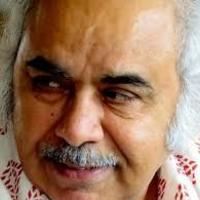Published by Notion Press, Chennai The above book written by Lalit Chugh has been published in 2016. The book covers the simultaneous progress in canonical literature and temple architecture and art of Karnataka. It covers a timeframe... more
Published by Notion Press, Chennai The above book written by Lalit Chugh has been published in 2016. The book covers the simultaneous progress in canonical literature and temple architecture and art of Karnataka. It covers a timeframe beginning with Prehistoric times (around 3500 BCE) to the Hoysala Period (1340 CE). The advent of scientific temper in material selection, architectural design, use of astronomy in temple design, mathematical constructs, fractal geometry and Borromean motifs has been examined while understanding and appreciating the Karnataka Temple. History of sculpture commencing from the Satavahana period till its exquisite form achieved during the Hoysala period too has been well captured. This book is intended for the visitors to Karnataka's ancient and medieval monuments to understand and appreciate their beauty and symmetry. It will answer many questions the visitor may have about the Temple Architecture and Sculpture while advising about their antiquity and history. The book has been written in simple language with emphasis on providing information rather than creating a scholarly text. In order to make it easier for the reader to understand the technical terms, description has been provided in simple words accompanied by illustrations and photographs. Historical perspectives have been adequately captured to illustrate the gradual advances in architectural designing techniques and sculptural refinements. It is hoped that the reader will find the book as a good companion while visiting monuments of Karnataka. Chapter 4 of the book will turn out to be the most useful for a layperson as it details most of the information about Temple layout, planning, components and architecture in simple and easily understandable terms, illustrated with photographs. History of Art and Architecture in Karnataka is detailed in Chapter 5 describing separately the influence of Buddhism, Jainism and Hinduism on it. Chapter 6 details seven Heritage Circuits of importance in Karnataka. That should help interested persons to plan their Heritage tours. While photographs having direct contextual bearing are inserted in the main body of the book, photographs of general interest and those relating to the Heritage Circuits have been inserted separately as Plates at the end. The reader may be having a lot of questions about the Art and Architecture of Karnataka. He/she may want to know about various Heritage Touring Circuits. He/she may want to know what went into designing, planning and constructing monuments over a thousand year ago. He/she may still wish to know how art and architecture progressed during the ancient and medieval times in Karnataka. This book attempts to answer a lot of these questions. Some typical questions answered in this book are:
